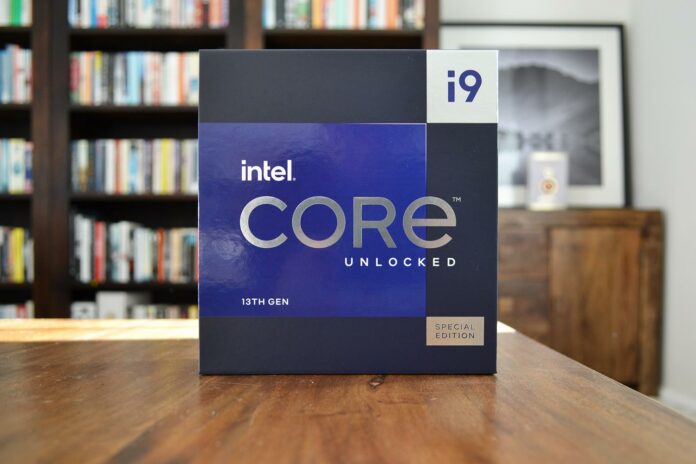Isn’t competition great? Intel and AMD have been butting heads in the premium desktop space since 12th Gen Core took it to Ryzen 5000 Series in late 2021. The heat turned up last year as Ryzen 7000 Series went up against Intel 13th Gen Core, with no clear winner in sight for range-topping models such as Ryzen 9 7950X and Core i9-13900K.
Adding fuel to this high-performance fire are releases in early 2023. AMD has shown its gaming hand through 3D V-Cache-enabled models from the latest generation, available at this end of this month, yet Intel is first to market with a Special Edition chip that takes all that’s good from incumbent Core i9-13900K and adds a modicum of frequency on top – enough, we might add, for it to be known as the world’s first 6GHz chip. Enter fabled Core i9-13900KS.
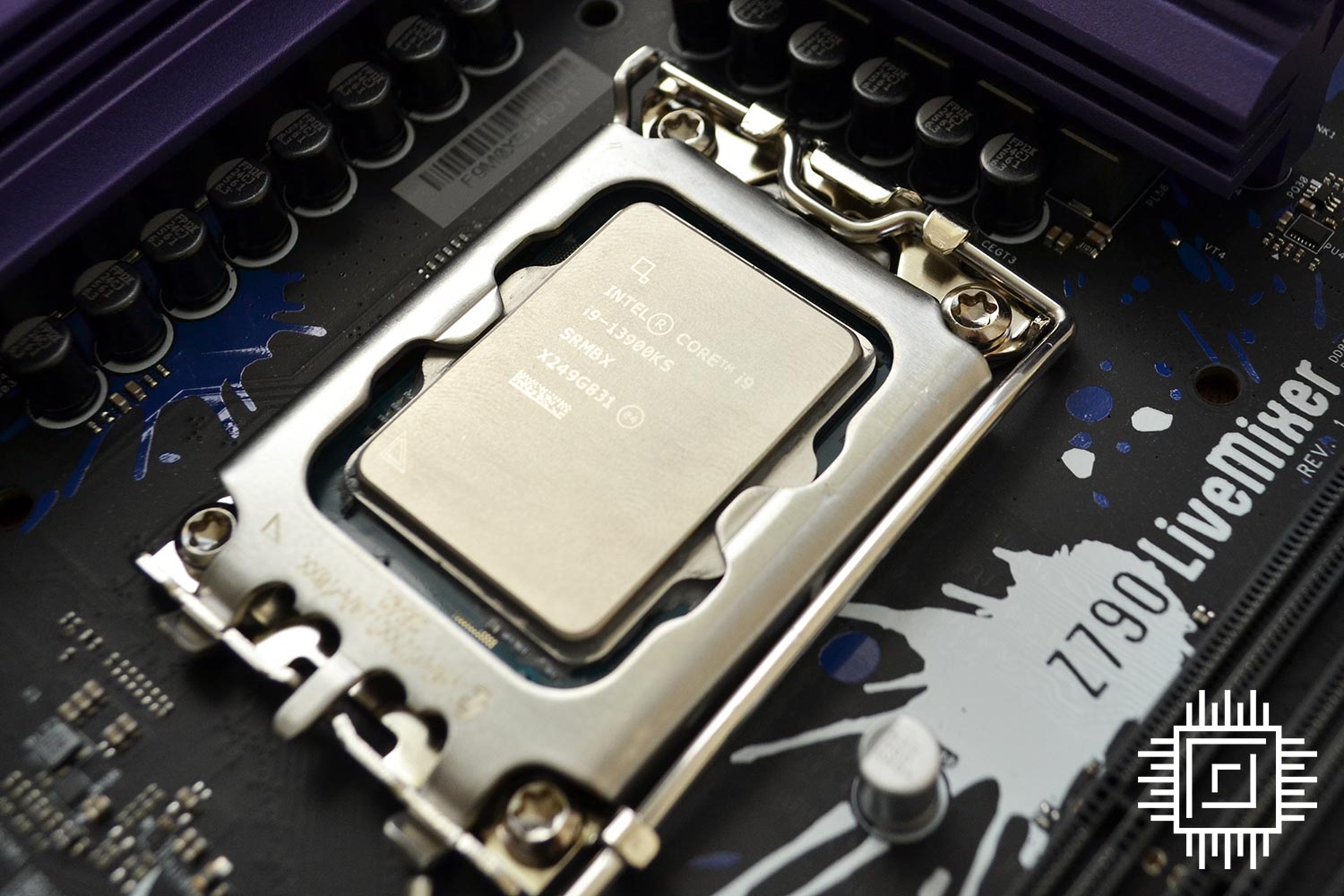

Intel Core i9-13900KS
£569 / $589
Pros
- Massive performance
- 6GHz out the box
- Tops most charts
Cons
- Crazy power
- 13900K better value bet
- Needs top-notch cooling
Club386 may earn an affiliate commission when you purchase products through links on our site.
How we test and review products.
Core i9-13900KS doesn’t seek to the reinvent the wheel. No, sir, that will be left to the next generation known as Meteor Lake. Rather, Raptor Lake’s finest is a frequency beast first and foremost. Usurping regular K by installing higher peak speeds – that 6GHz clocking is a consumer first for an out-the-box chip – Intel is forced to ratchet up power. Base juice escalates from 125W to 150W, which is understandable when a few cores are required to achieve that seminal 6GHz.
Core Evolution
| CPU | Cores | Threads | L2 | L3 | Turbo | Base TDP | MTP | MSRP |
|---|---|---|---|---|---|---|---|---|
| Core i9-13900KS | 24 (8P+16E) | 32 | 32MB | 36MB | 6.0GHz | 150W | 320W | $689 |
| Core i9-13900K | 24 (8P+16E) | 32 | 32MB | 36MB | 5.8GHz | 125W | 253W | $589 |
| Core i9-12900K | 16 (8P+8E) | 24 | 14MB | 30MB | 5.2GHz | 125W | 241W | $589 |
| Core i7-13700K | 16 (8P+8E) | 24 | 24MB | 30MB | 5.4GHz | 125W | 253W | $409 |
| Core i7-12700K | 12 (8P+4E) | 24 | 12MB | 25MB | 4.9GHz | 125W | 190W | $409 |
| Core i5-13600K | 14 (6P+8E) | 20 | 20MB | 24MB | 5.1GHz | 125W | 181W | $319 |
| Core i5-12600K | 10 (6P+4E) | 16 | 9.5MB | 20MB | 4.9GHz | 125W | 150W | $289 |
Of rather more concern is the 320W required for full-steam performance, and here’s a good juncture for an explanation into how Intel mandates power for high-performance chips. All processors carry a Power Level (PL) figure for short- and long-term loads denoted as PL2 and PL1, respectively. Most motherboards, it must be said, disregard PL1 and install PL2, also known as Maximum Turbo Power (MTP), for highest performance. Nobody wants their Z790 left behind. In other words, running full gas requires either a PL2 setting or complete specification override in the BIOS.
This is where Core i9-13900KS is different insofar as Intel jacks up both PL1 and PL2 to a blistering 320W, or 26 per cent higher than regular K. It’s Team Blue’s method of eliminating any hurdles in the search of maximum frequency. Making matters more complicated, one can also set a Core i9-13900K into this wailing banshee mode by installing PL1 and PL2 figures of 4096 in most boards’ BIOSes.
Does this mean KS is merely an uninhibited K through some microcode tweaks? Not necessarily, as it’s clear this Special Edition model, limited in quantity, uses the highest-yielding dies to ensure the 6GHz low-load target can be met. Distilling it all down, think of it as the best pre-binned Raptor Lake silicon that’s allowed to run at hitherto unseen speeds, albeit at the expense of outrageous power. Understanding the lofty electrical requirements naturally leads to 13900KS being run on a well-specified Z790 board rather than a middling B760. All those power stages are finally of use.
This extra work results in the MSRP climbing from $589 to $689. Relative value suffers dramatically as a result, of course, as we expect KS to beat up on regular K by only a few per cent, but that’s the inevitable price for marginal gains. Primed to be the best CPU from Intel until 14th Gen’s arrival, it’s rude not to benchmark it, don’t you think?
The Chip
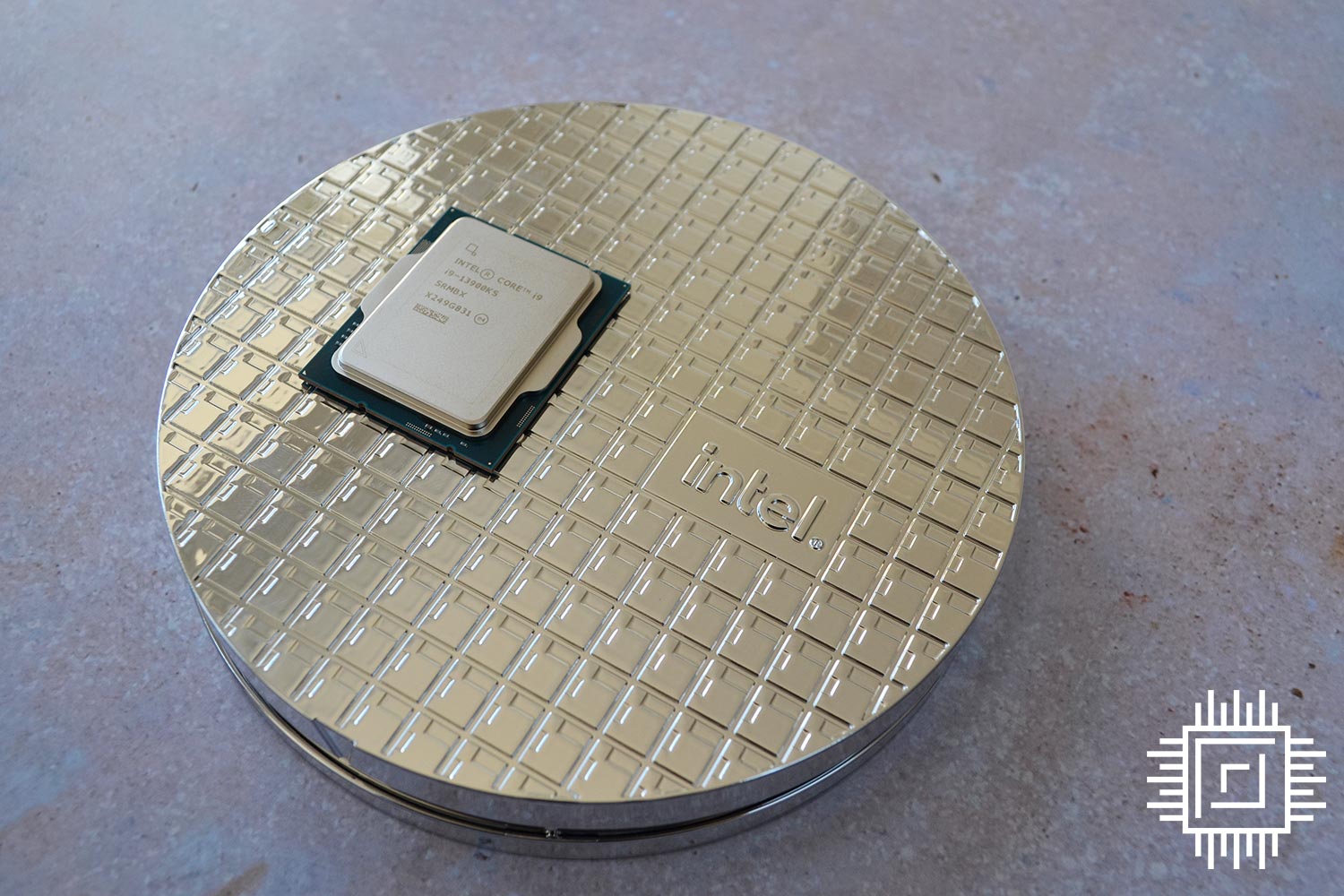
Core i9-13900KS comes in a rather attractive box with the wafer-like internal packaging accessed by removing a magnetic clasp. Being ‘Special,’ wouldn’t it have been cool for ol’ Pat to sign each one, for posterity, though we’re adamant he has more important things to do.
Back on track. Core i9-13900KS is physically presented in the familiar LGA1700 form factor that finds a home on 600- and 700-series chipsets. There’s every reason why it’ll work on a decent Z690, but Intel prefers Z790 as the cosier home. Common with recent premium launches, there’s no heatsink in the box, which makes sense when you factor in a very capable all-in-one water cooler or dual-fan tower heatsink is required to tame this monster’s 320W MTP. As a brief insight into what will follow, even a dual-fan Noctua NH-D15, considered by many as the best air cooler in the business, struggles to keep a stock-clocked Core i9-13900KS below 100°C. Good for winter days.
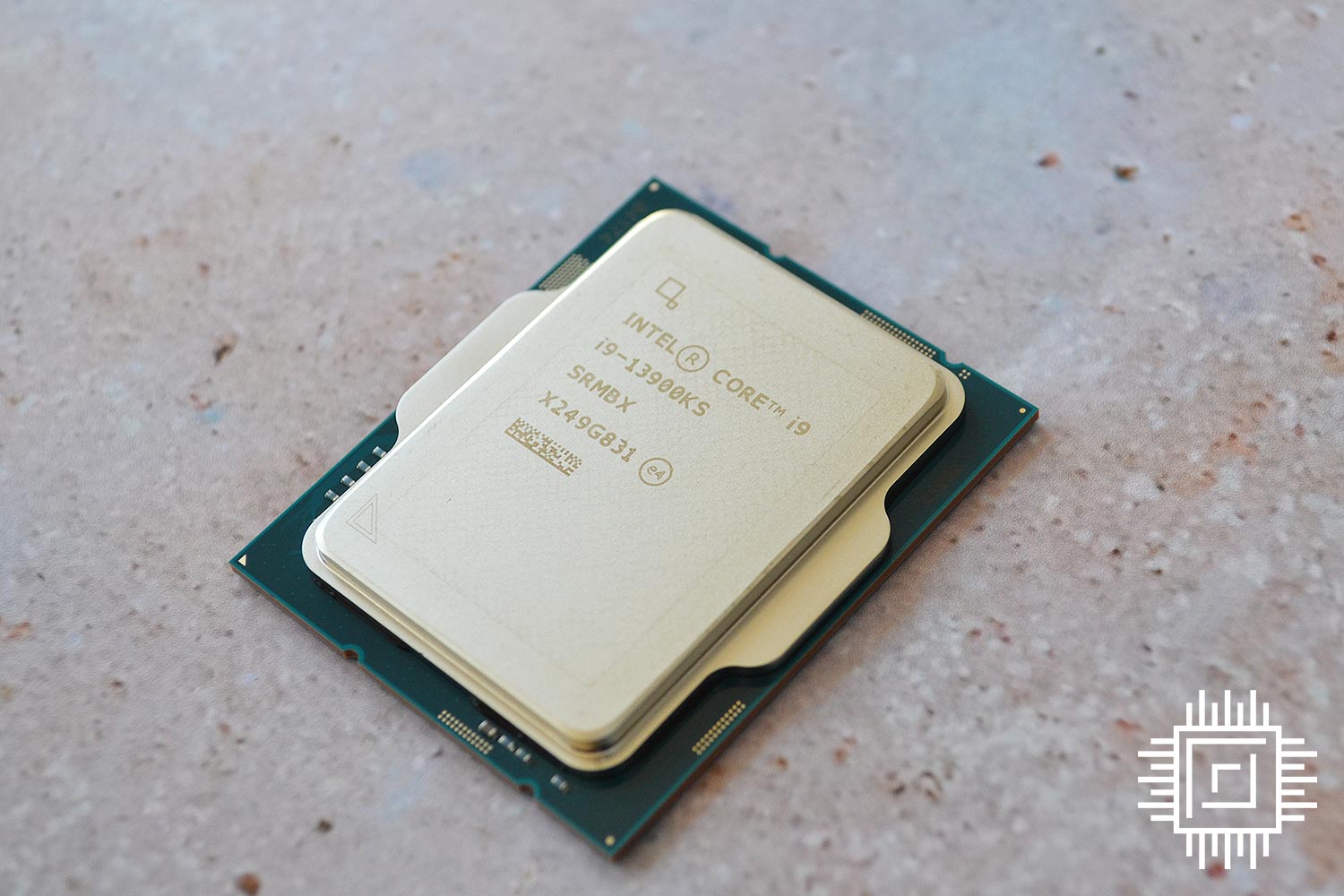
Benchmarked on an Asus ROG Maximus Z790 Hero motherboard backed by 32GB (2x16GB) of G.Skill Trident Z5 Neo EXPO CL30 memory operating at DDR5-5600, our test system keeps it premium by also using an Nvidia GeForce RTX 3080 FE graphics, Seagate FireCuda 530 SSD, and Noctua NH-D15 cooling. be quiet!’s Dark Power 13 1,000W PSU provides perfectly stable power.
Performance
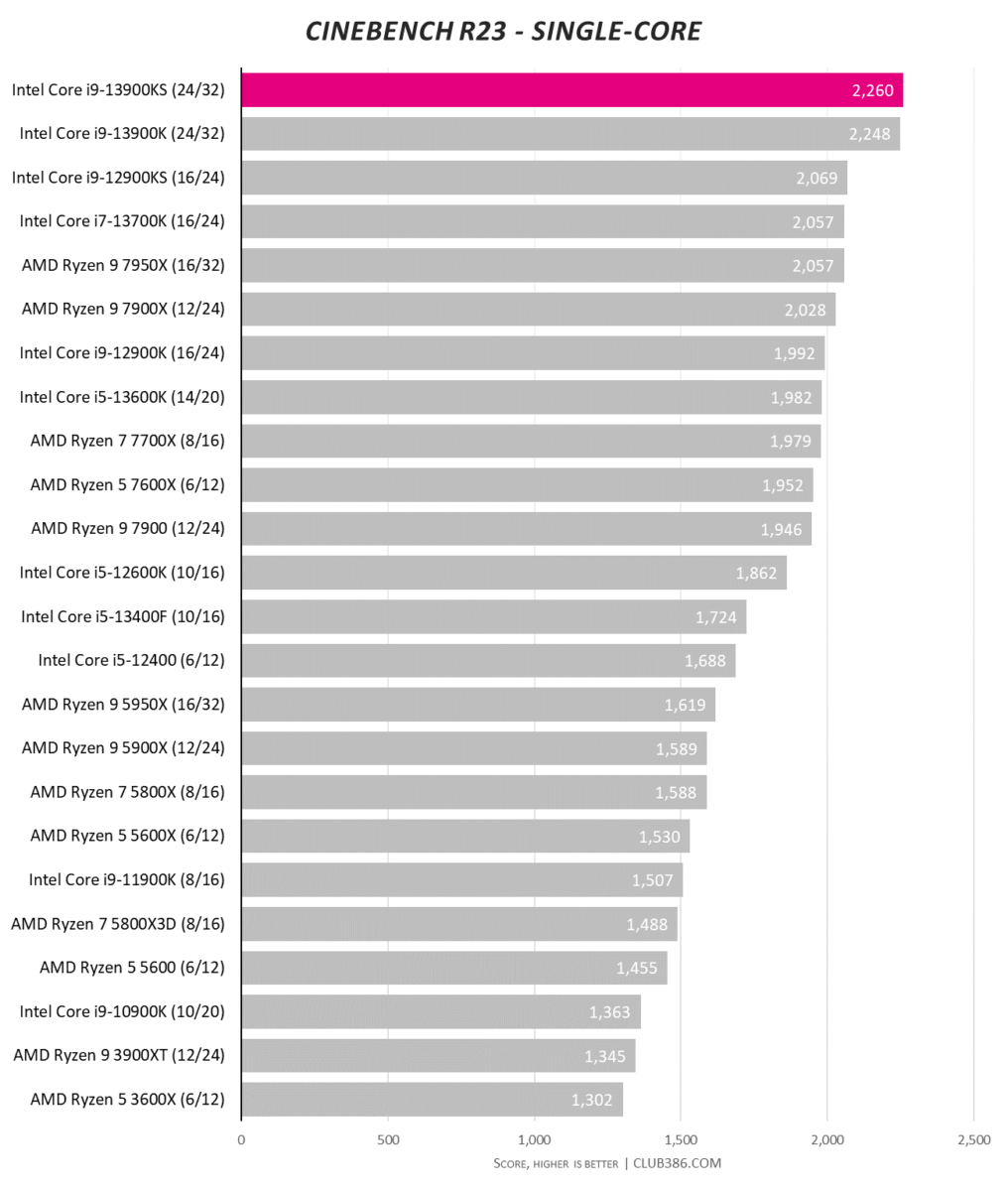
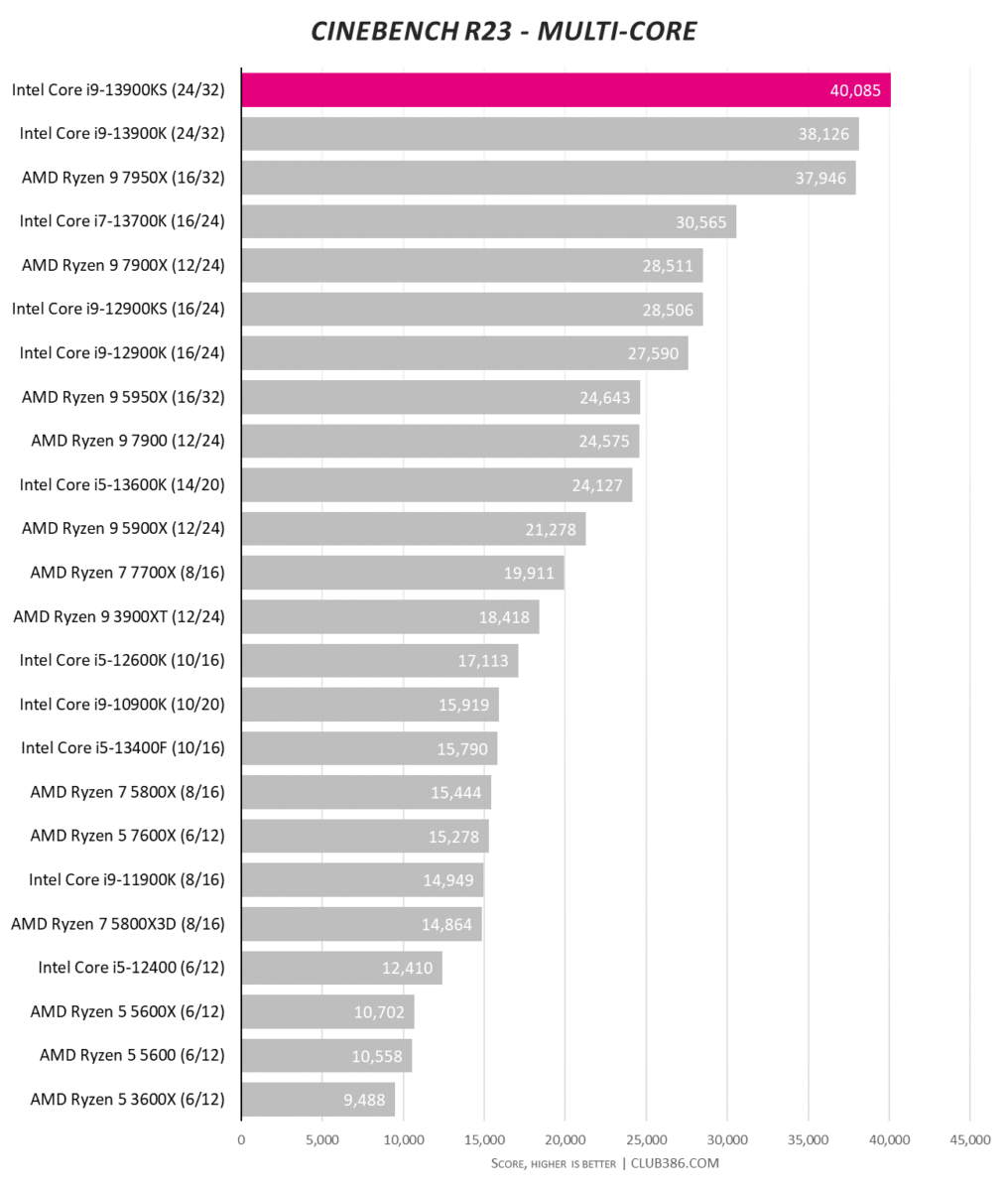
Well, there was every reason why the head honcho of the Core i9 desktop clan would use copious amounts of power and jump to the top of the single- and multi-threaded charts.
Duly delivered, Core i9-13900KS is the first client processor to smash through the 40,000-mark barrier when in out-the-box state.
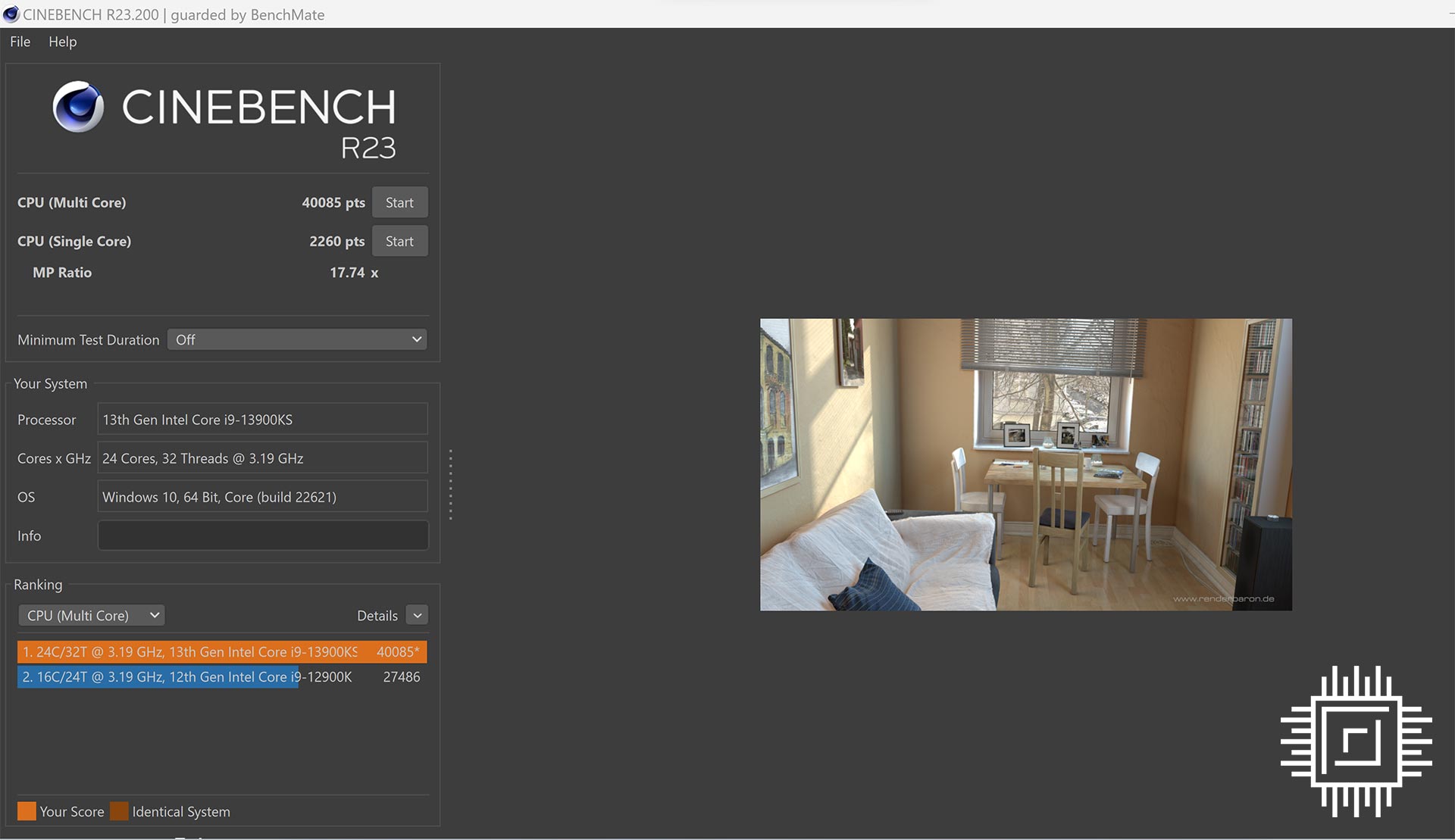
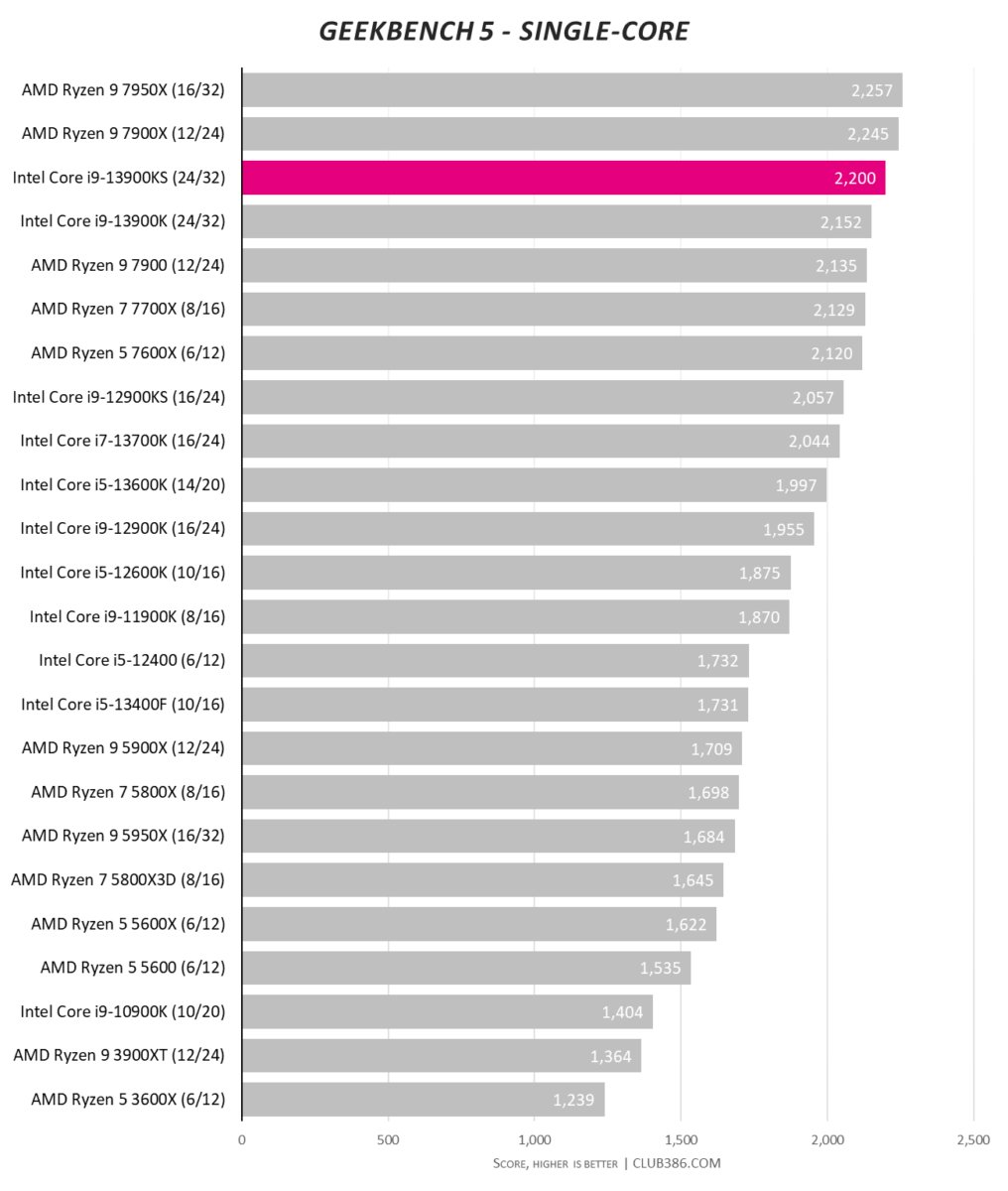
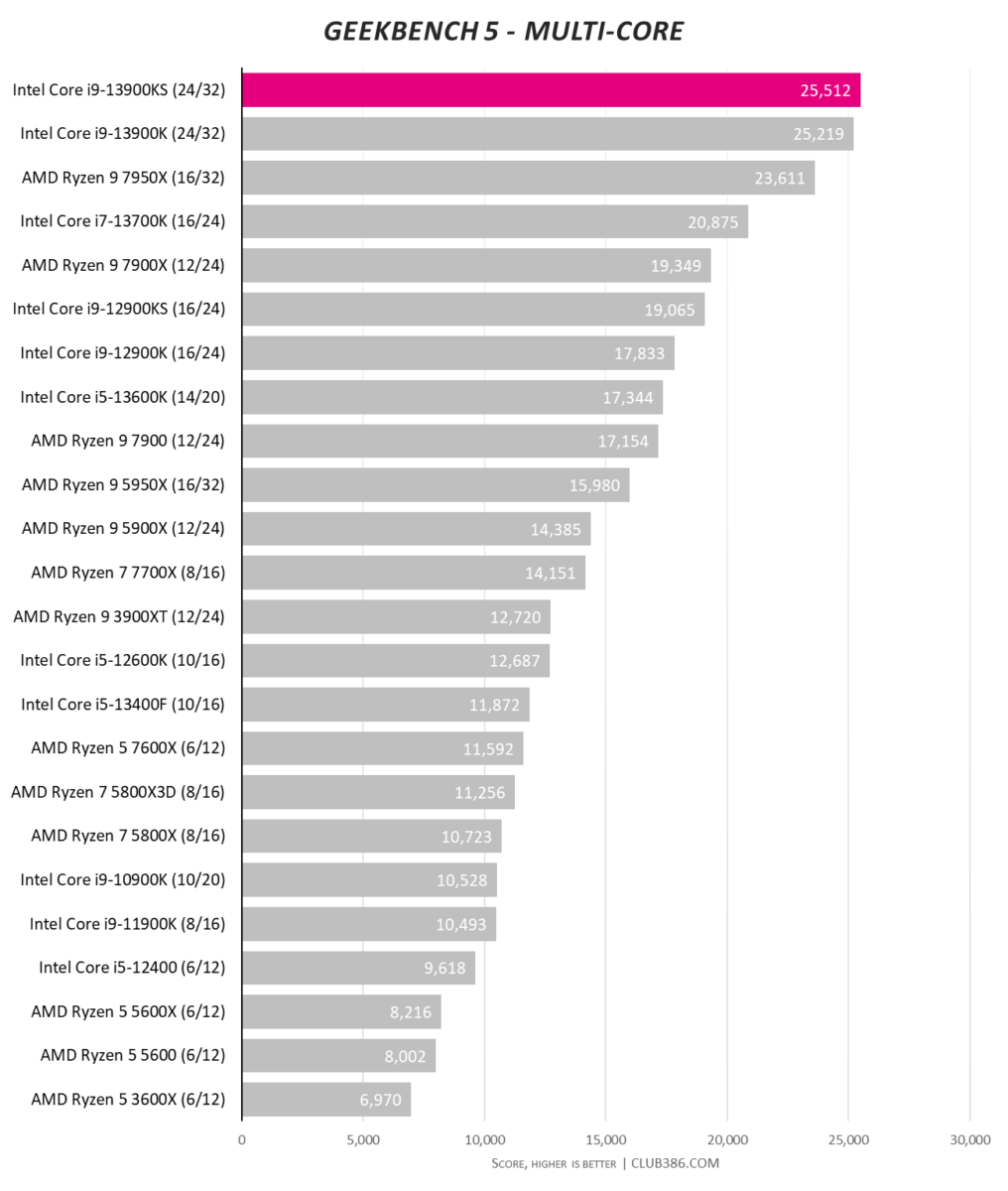
The performance delta down to Core i9-13900K isn’t all that great. And one shouldn’t expect it to be, because if you recall, KS is essentially a factory-overclocked version – Intel does the hard work for you.
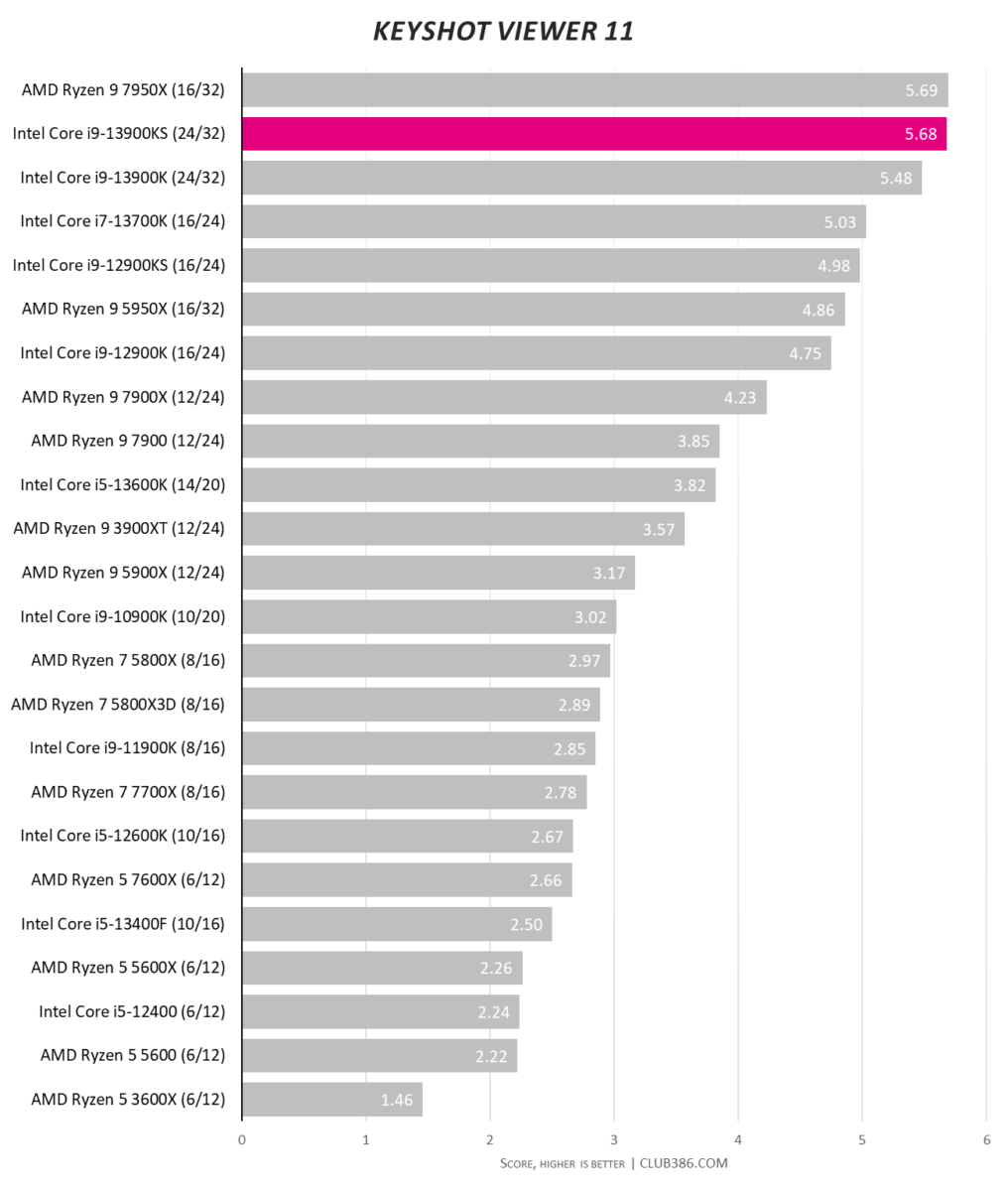
Ryzen 9 7950X hangs on to the lead by the skin of its silicon teeth.
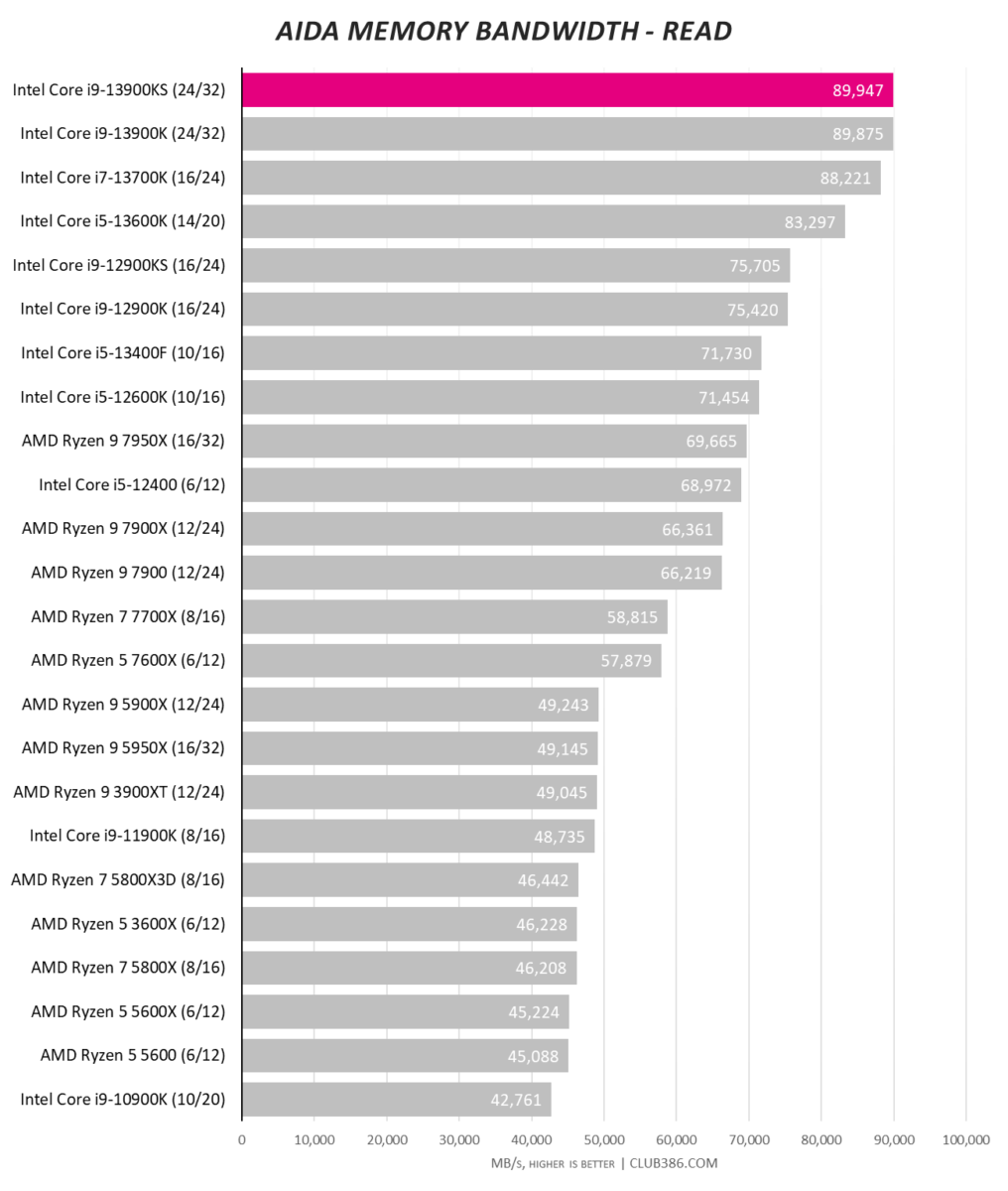
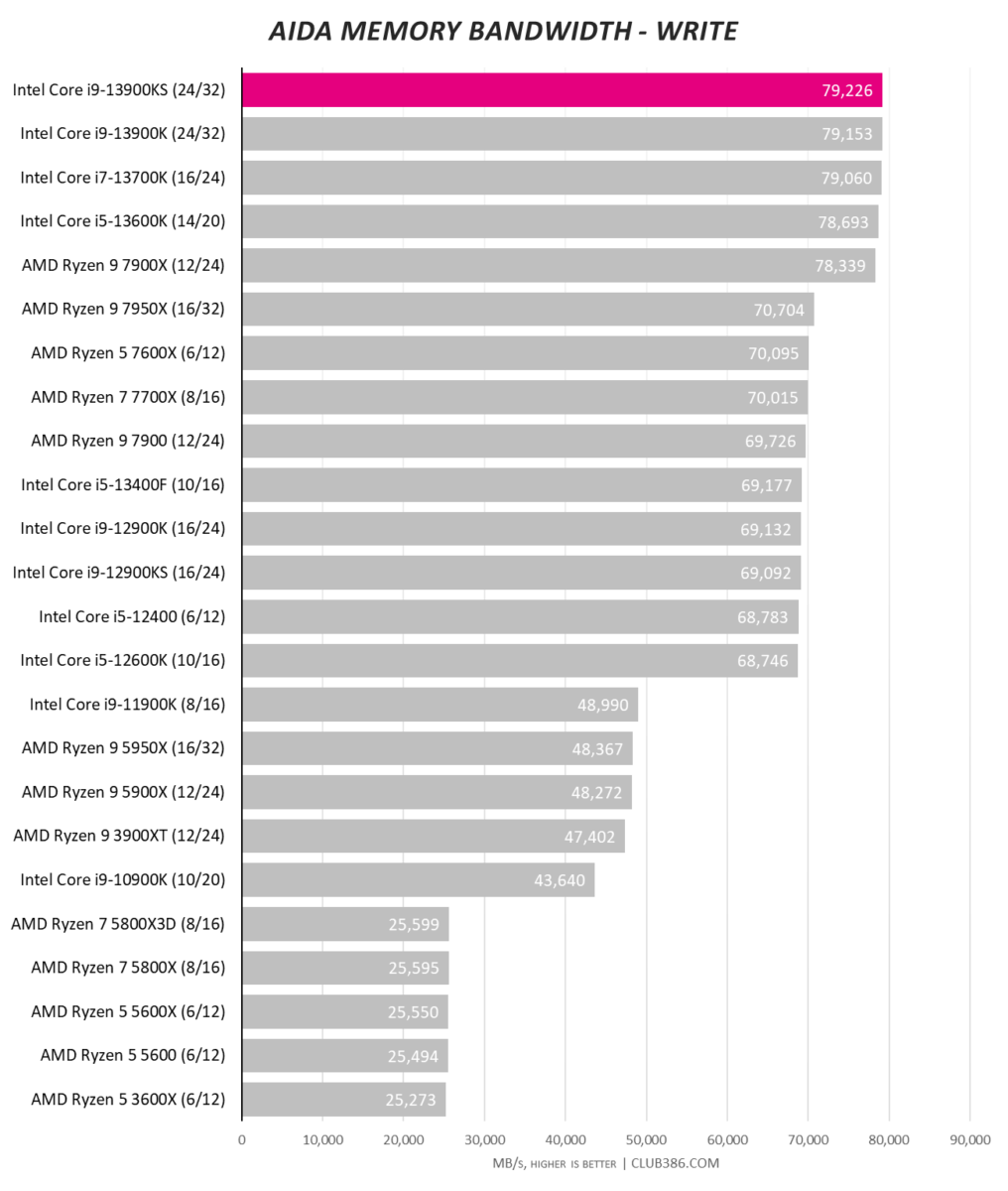
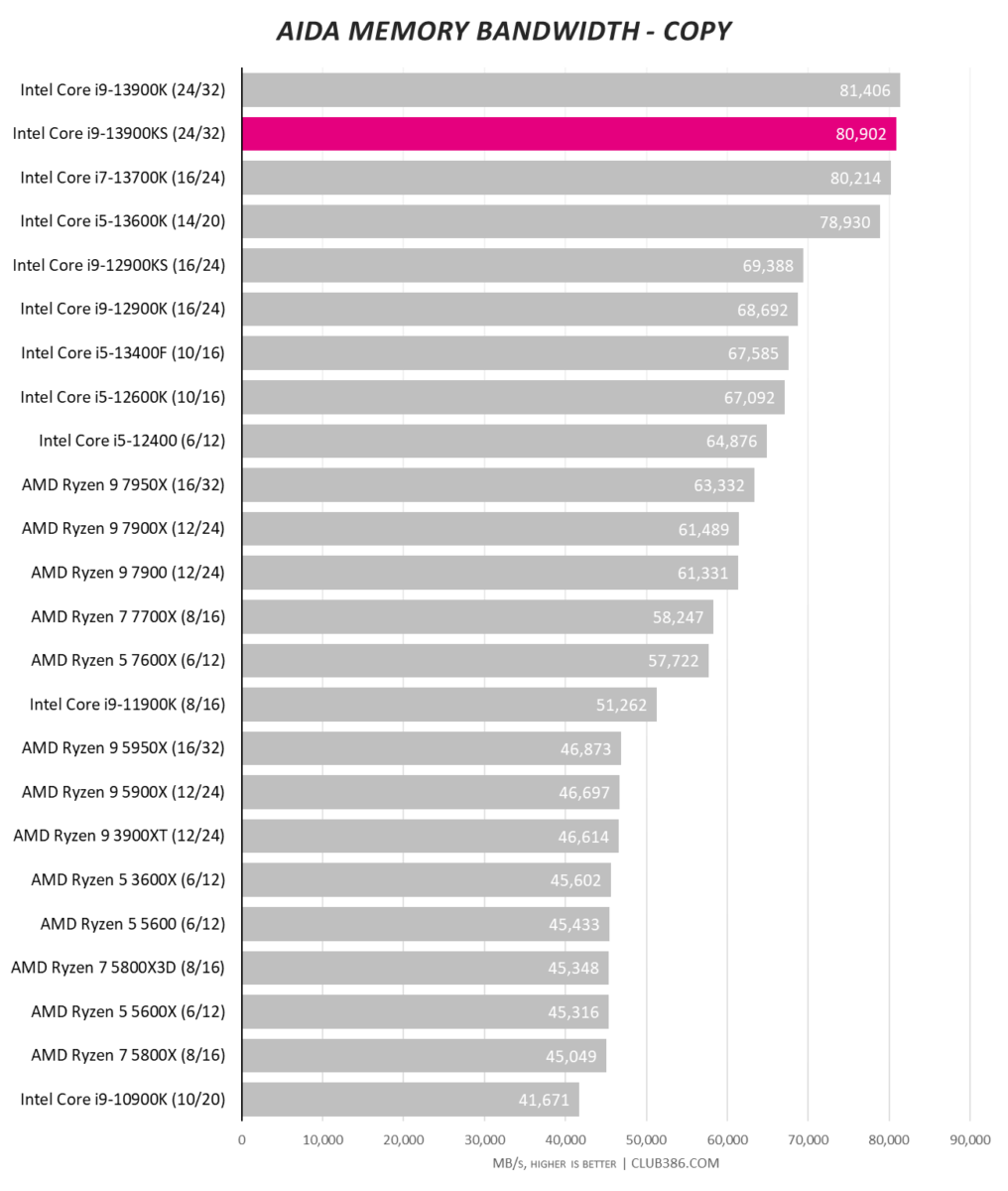
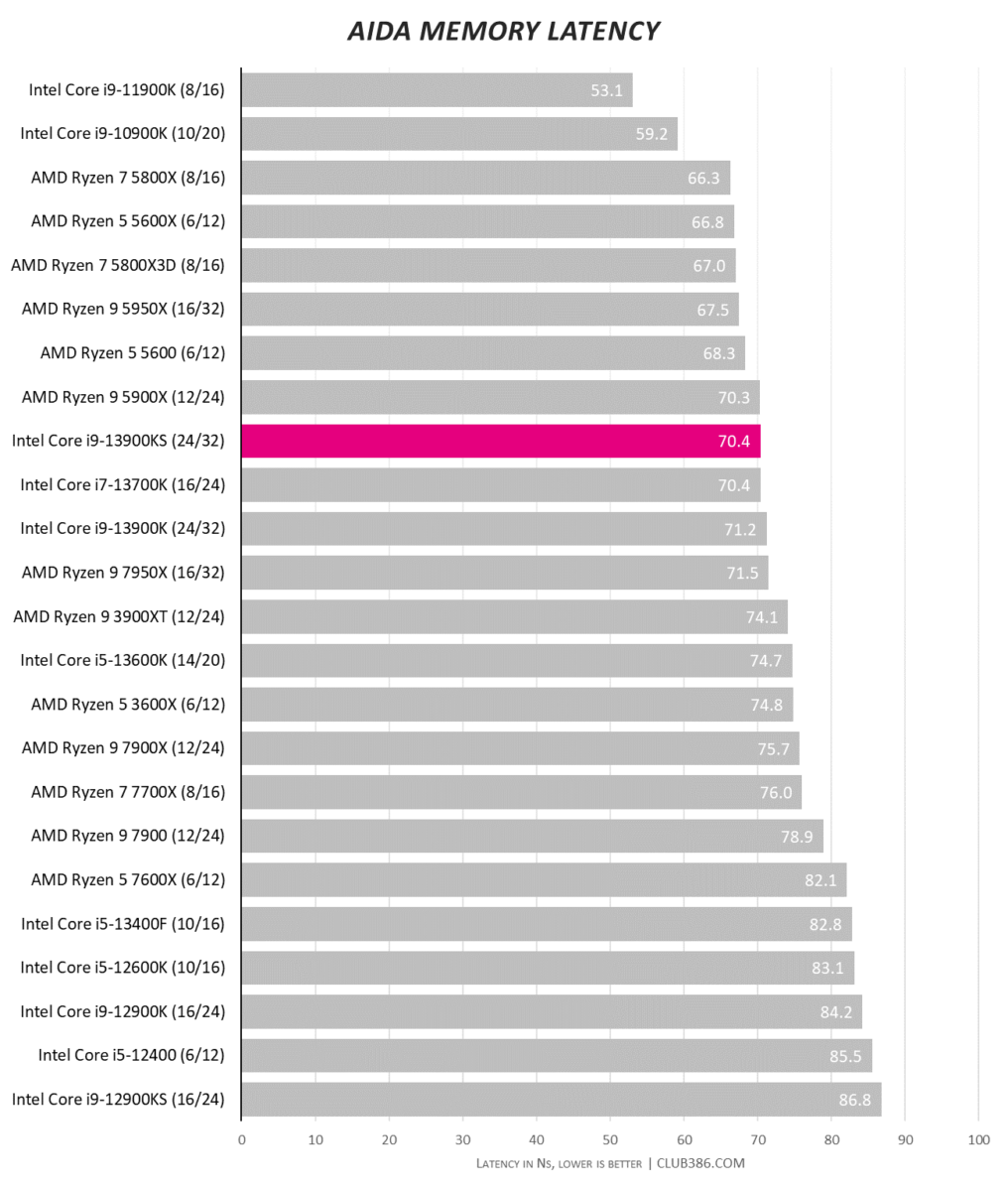
Dual-channel DDR5-5600 is no slouch in the memory department. Depending upon what kit you use, getting to a sub-60ns latency is possible, and if there’s one thing we know about Raptor Lake, it’s the ability to run at really high frequencies.
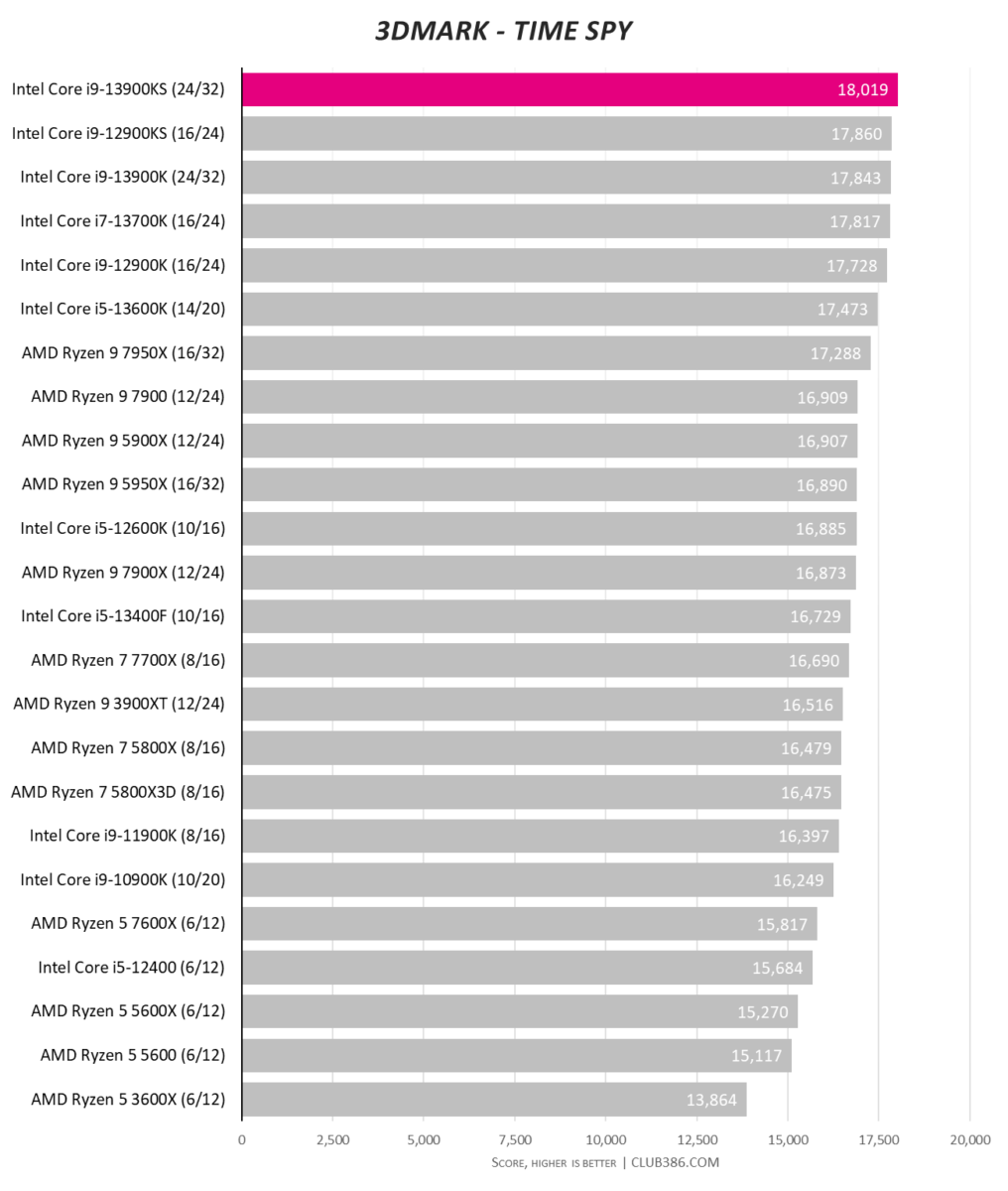
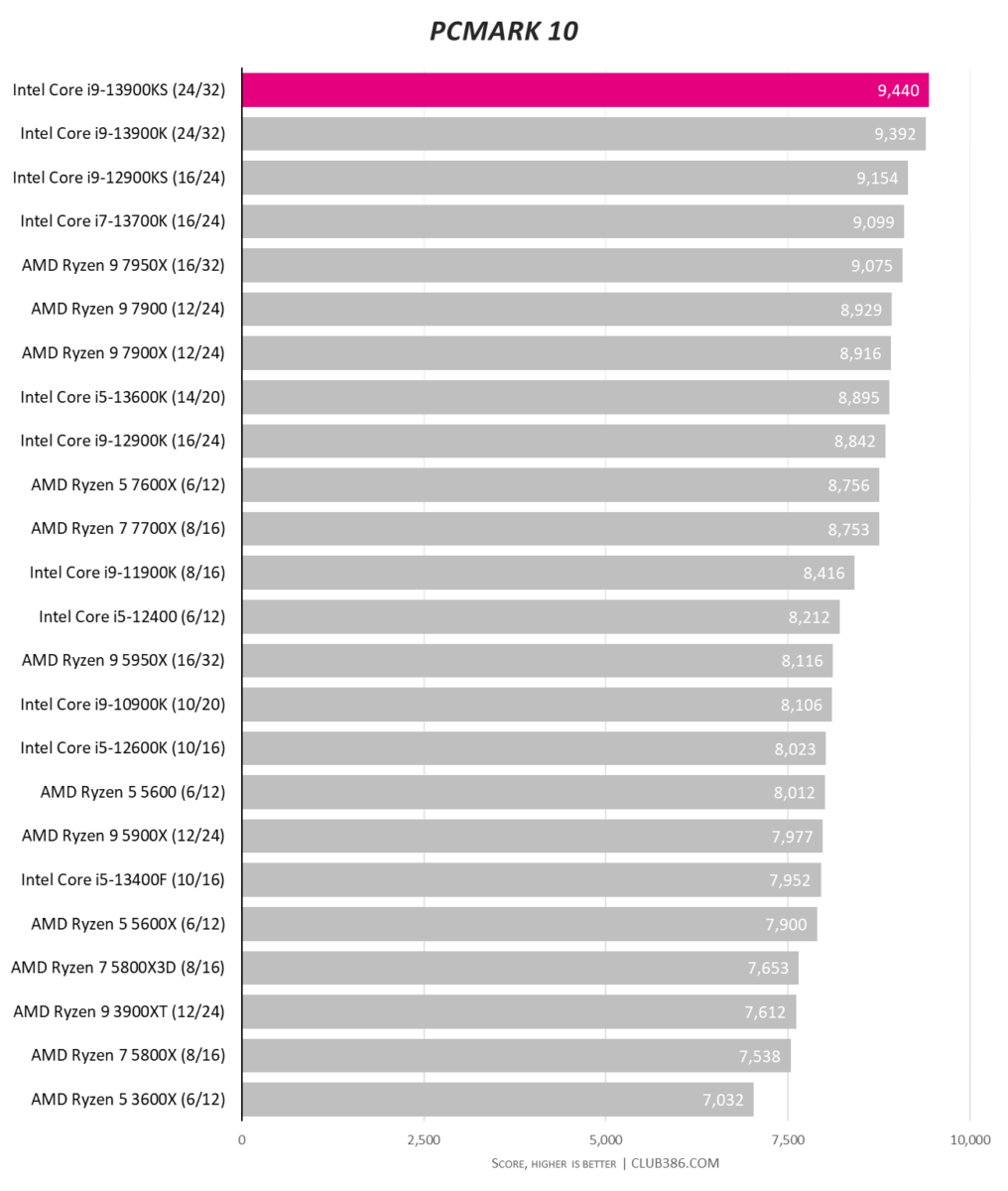
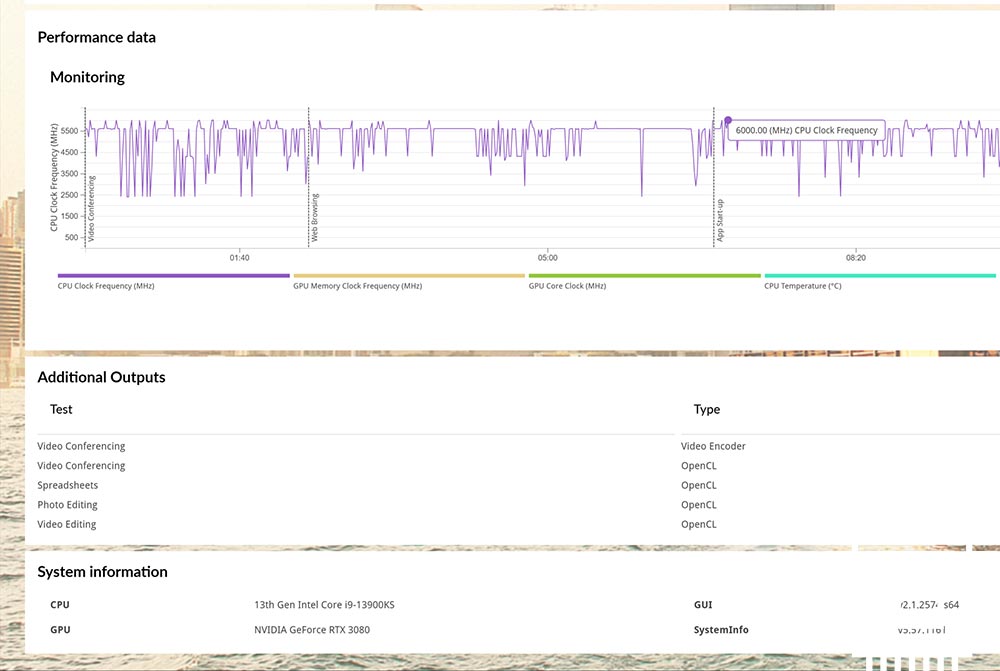
Hit me for six! Though it doesn’t reach the seminal speed too often, half-a-dozen GHz sure is sweet to look at.
Gaming
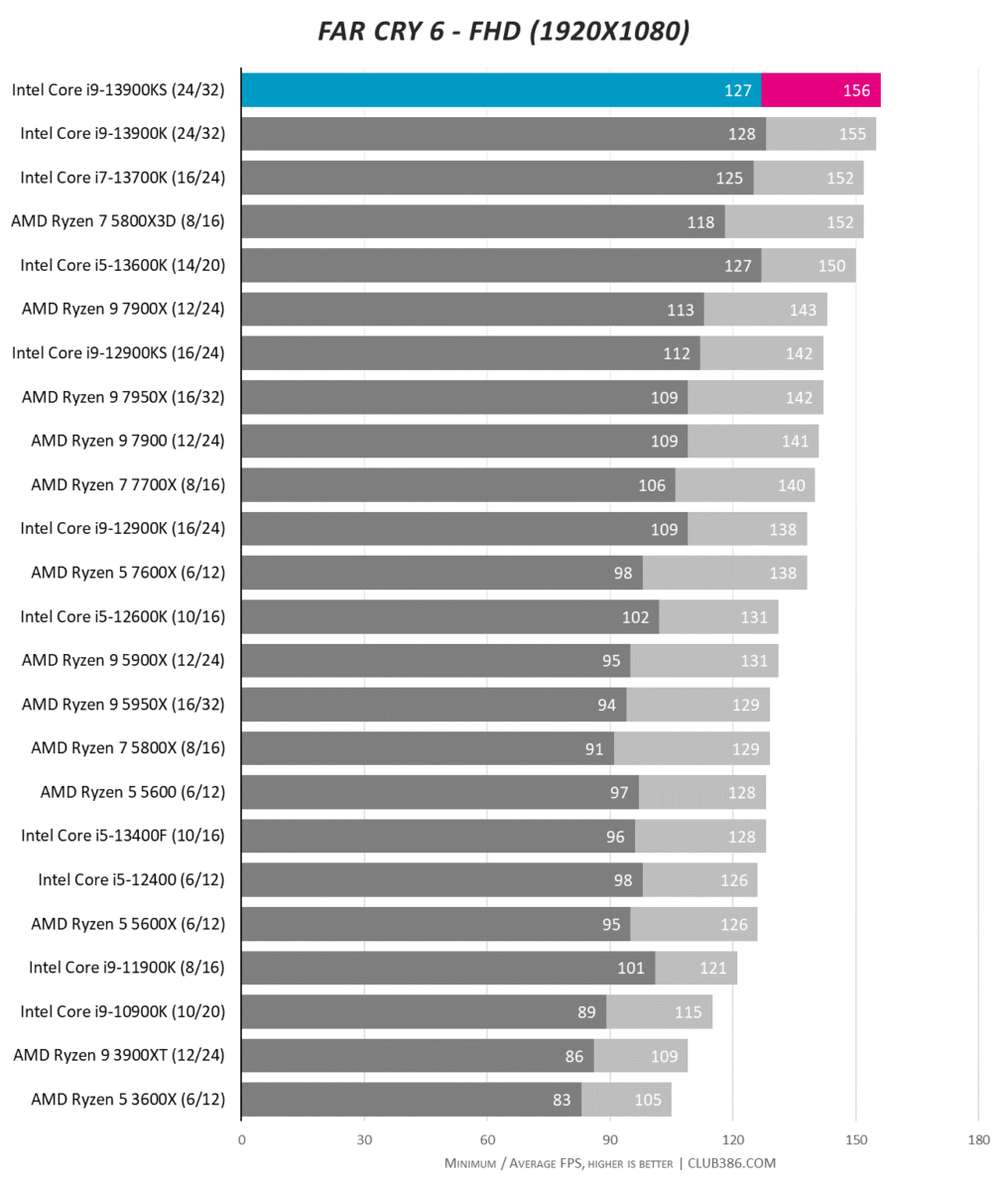
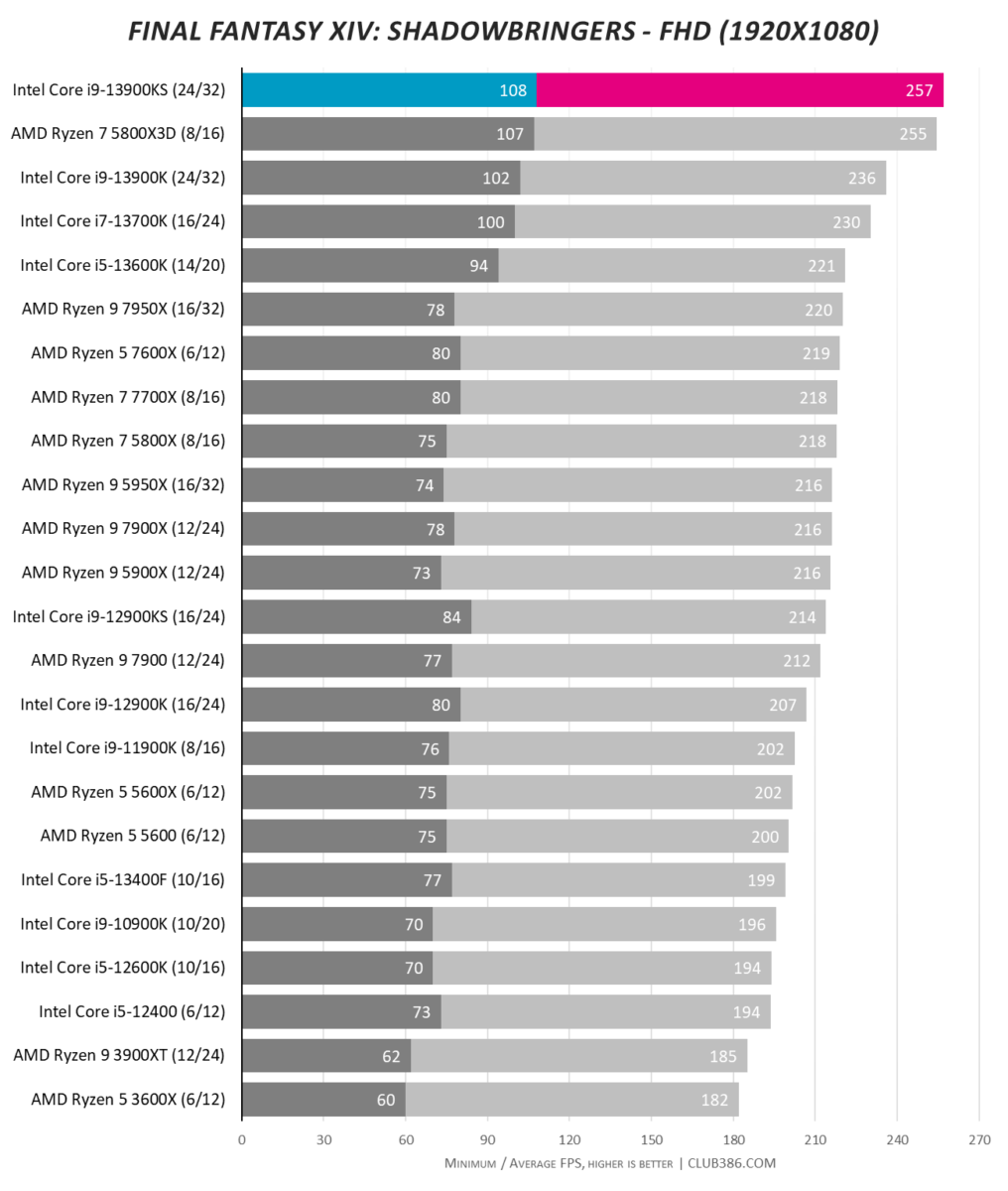
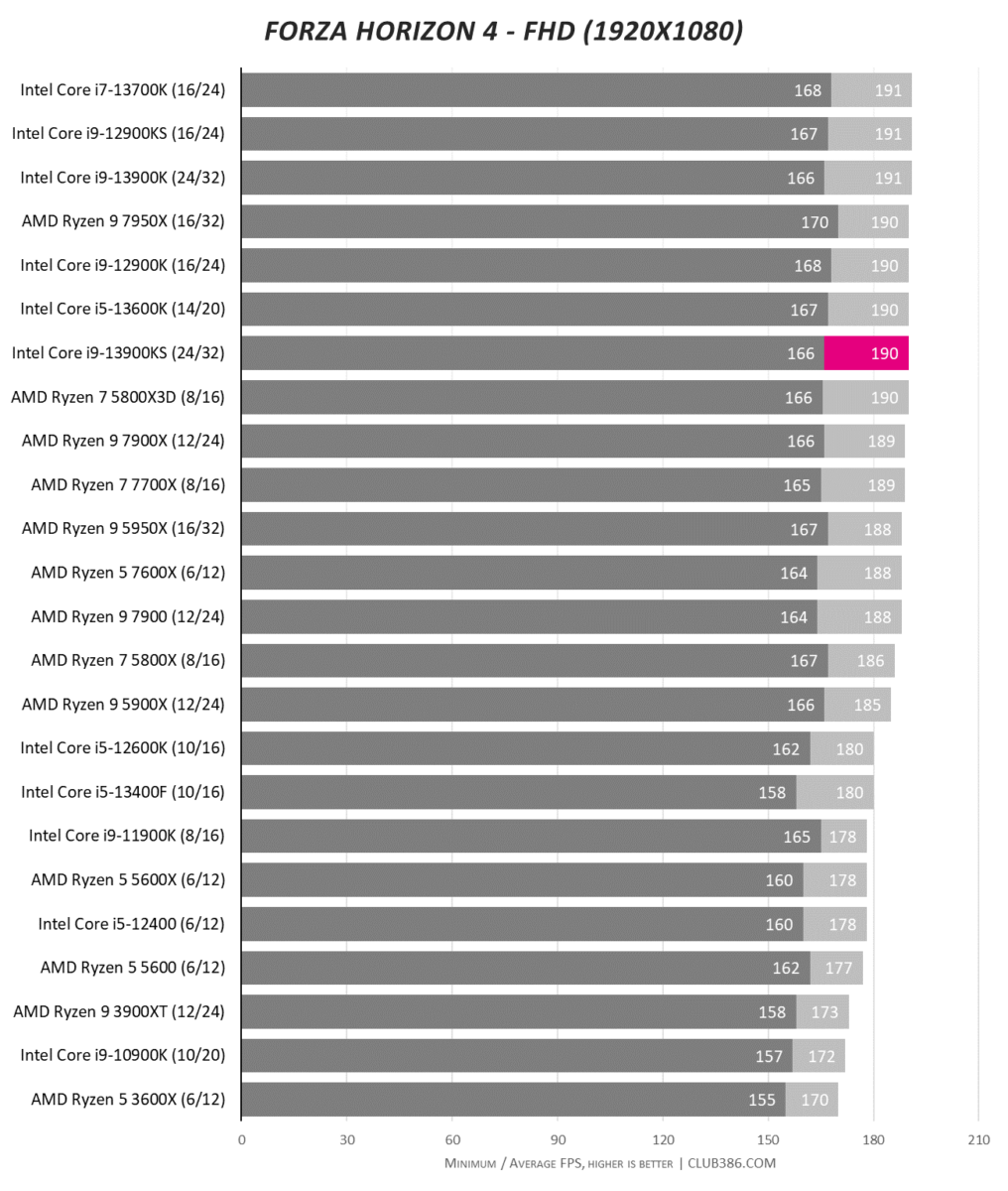
Core i9-13900KS achieves a marginally higher per-core frequency than regular K. Most of the time this translates into an extra fps or two.
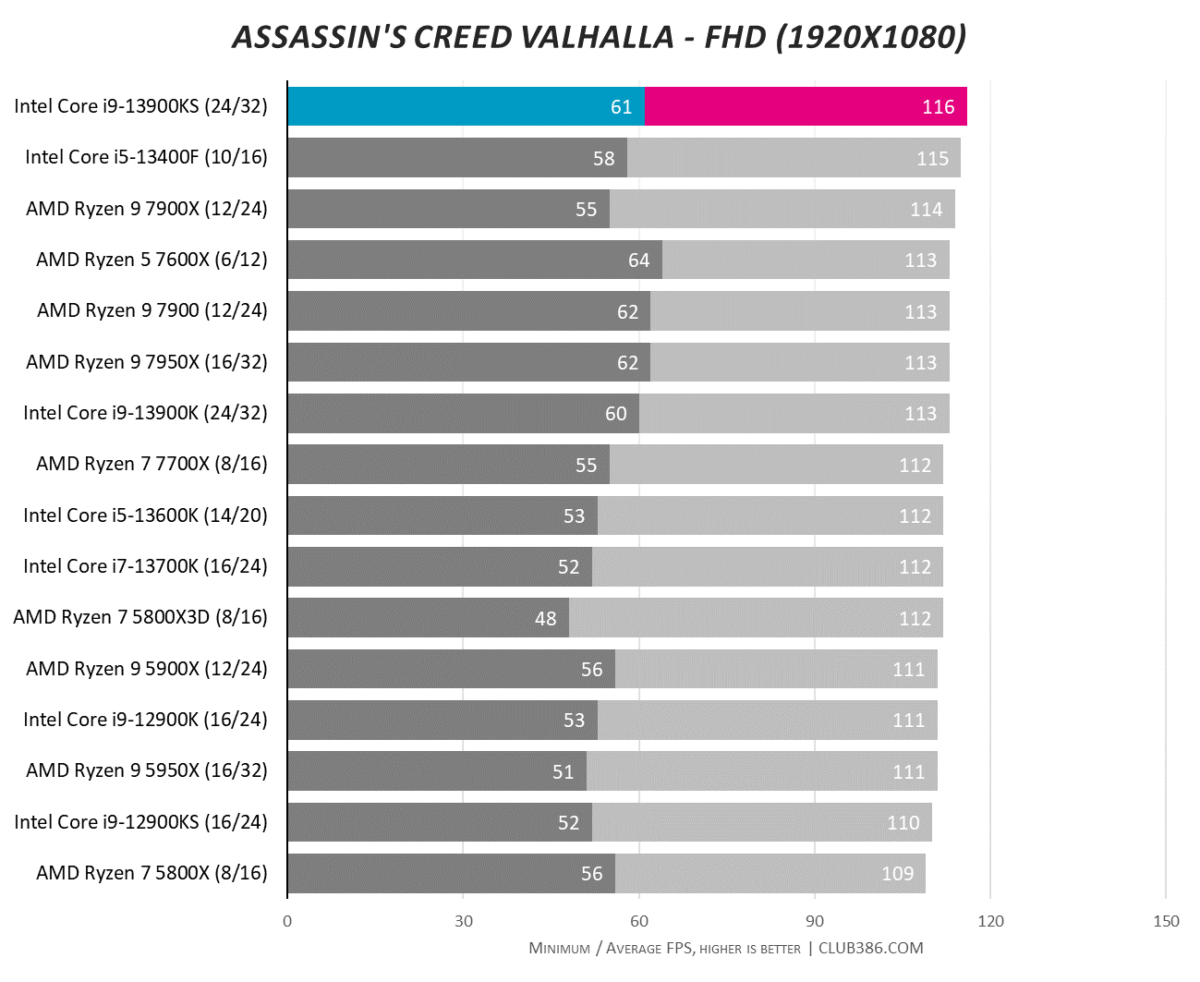
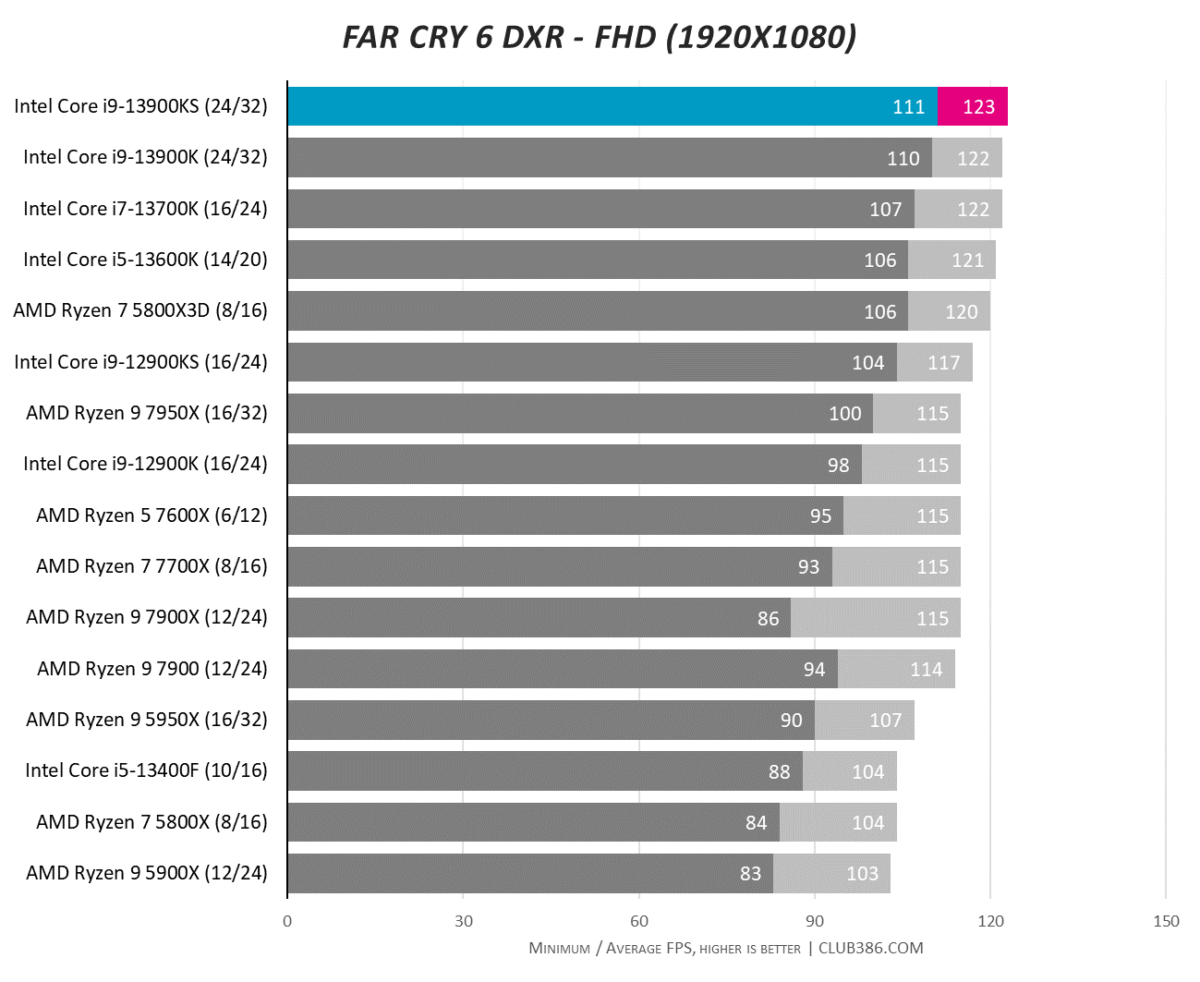
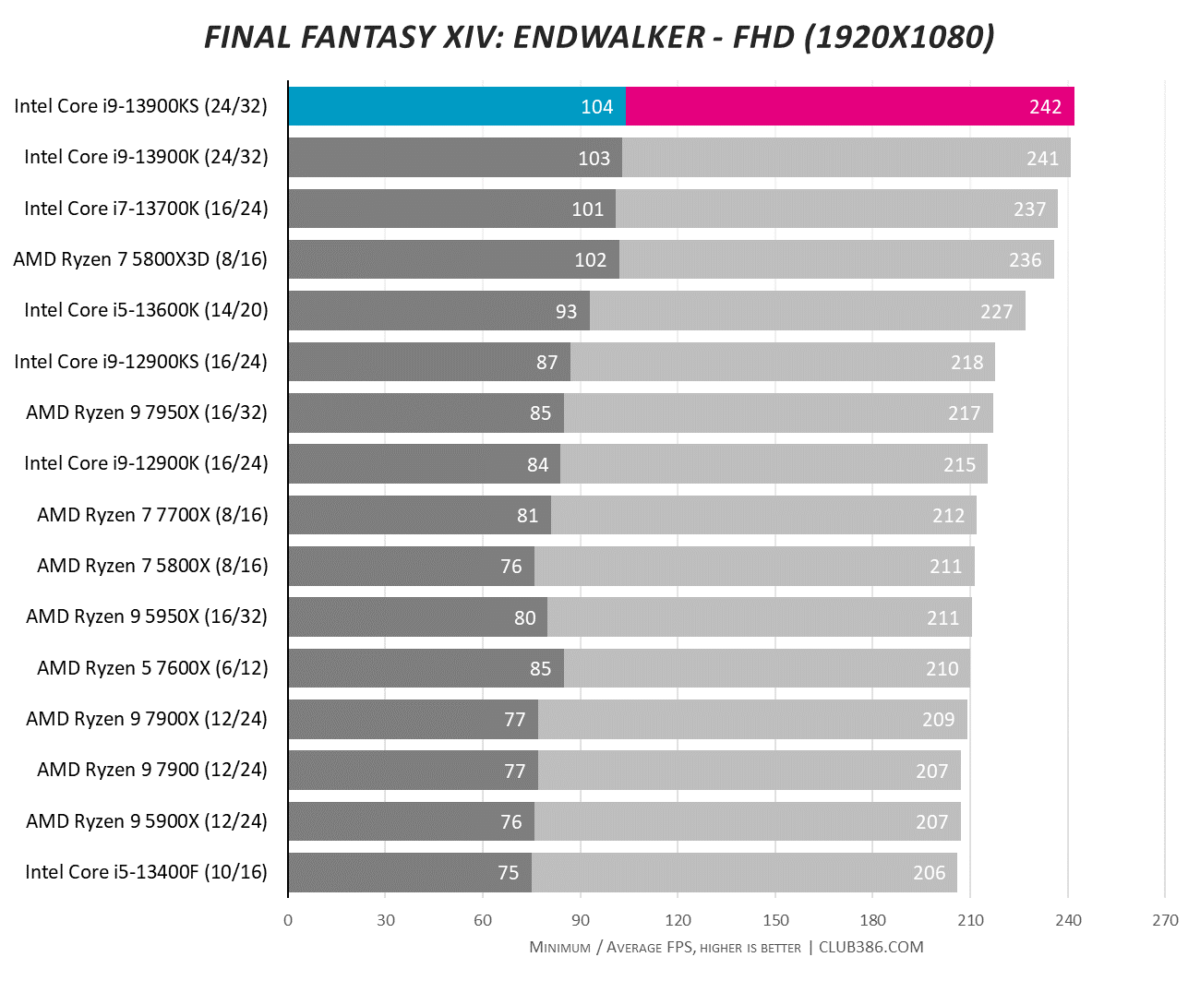
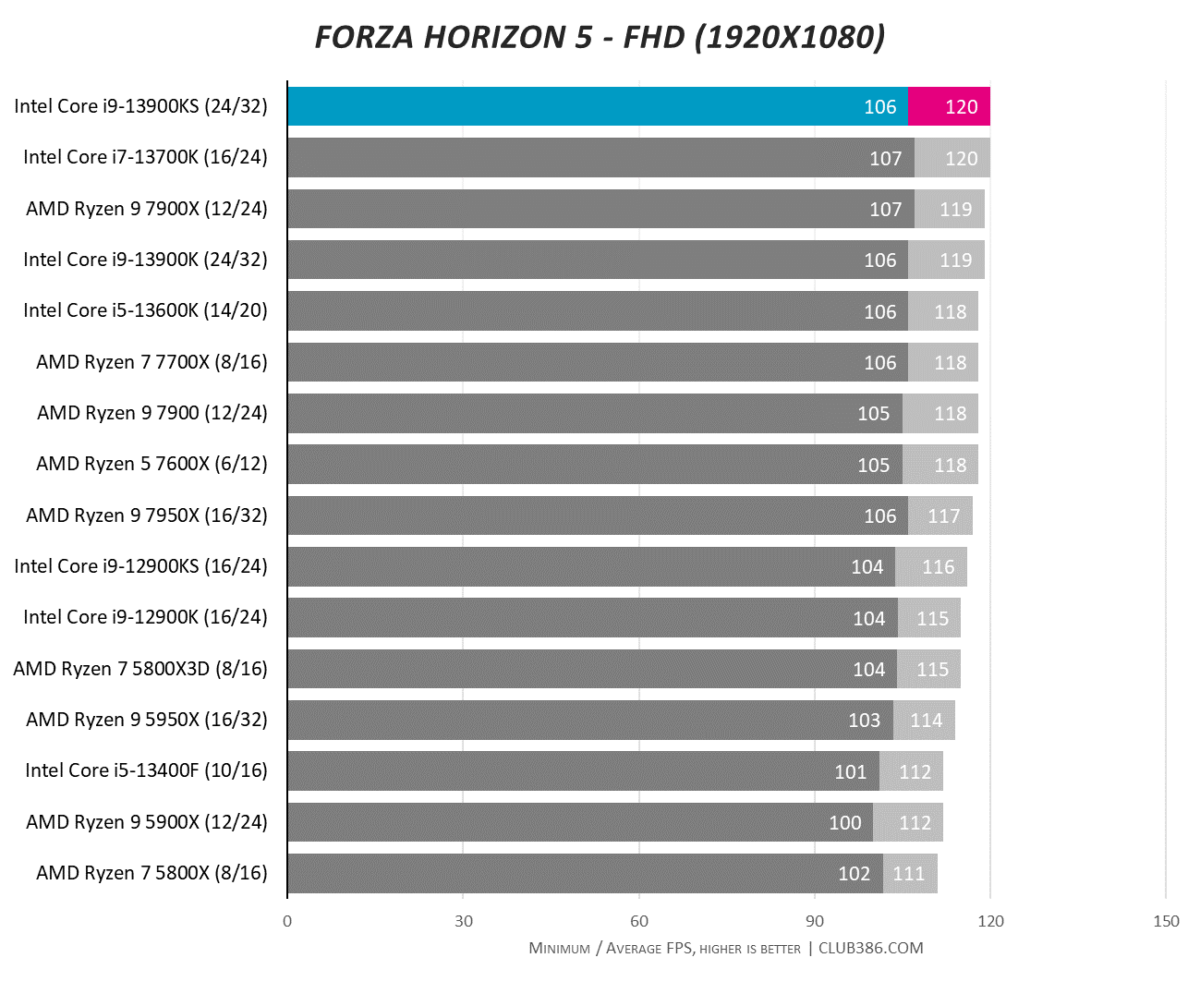
Running more games reinforces the obvious truth that CPU frequency doesn’t matter a great deal when other chips routinely boost to over 5GHz with ease.
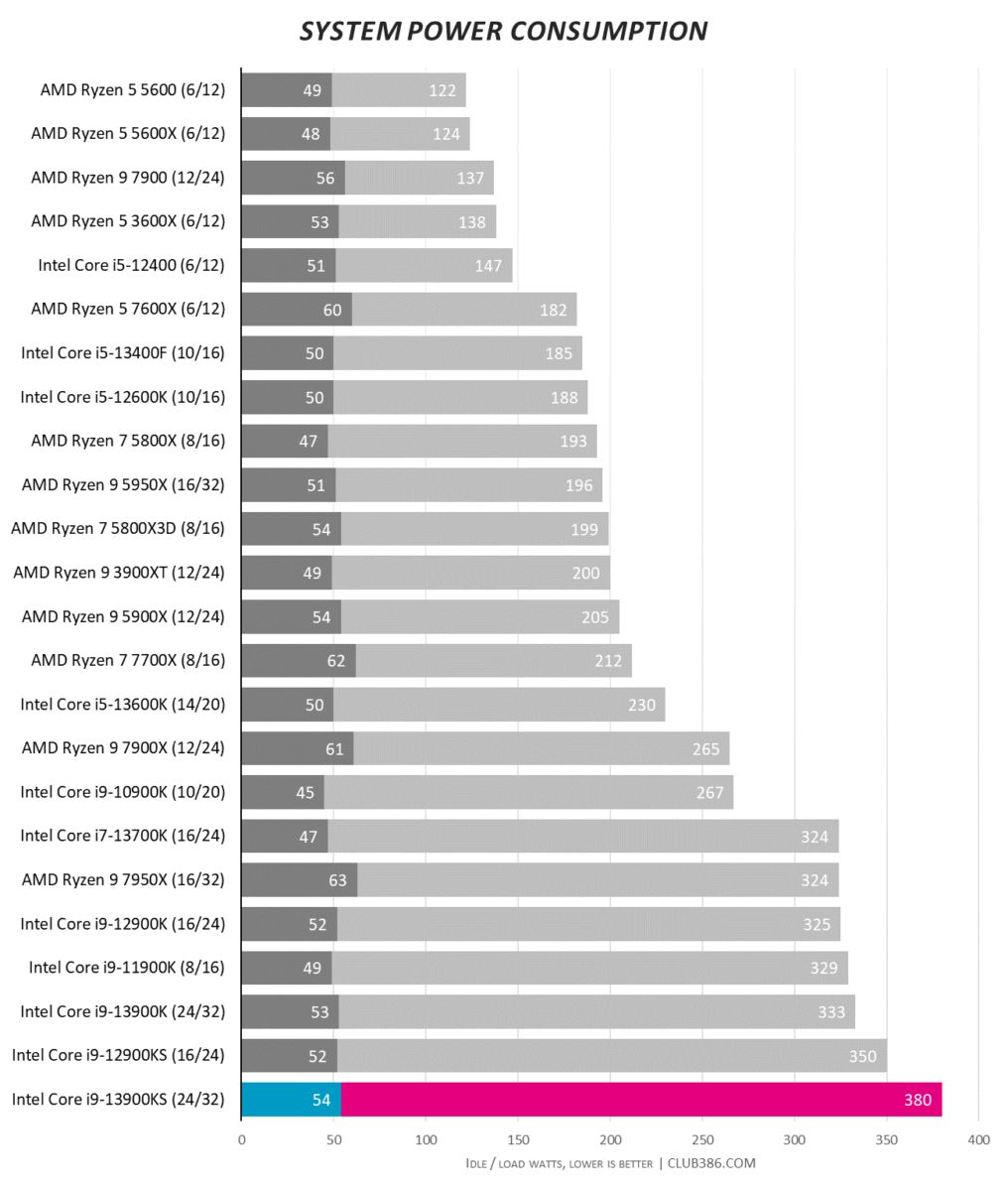
Here’s the other side of the coin. Having a native 320W TDP means one thing – the worst system-wide power consumption in our line-up, by some margin. 380W needs serious cooling consideration. A dual-fan Noctua NH-D15 is barely a match for this CPU running at full chat, so bear that in mind when speccing a new build.
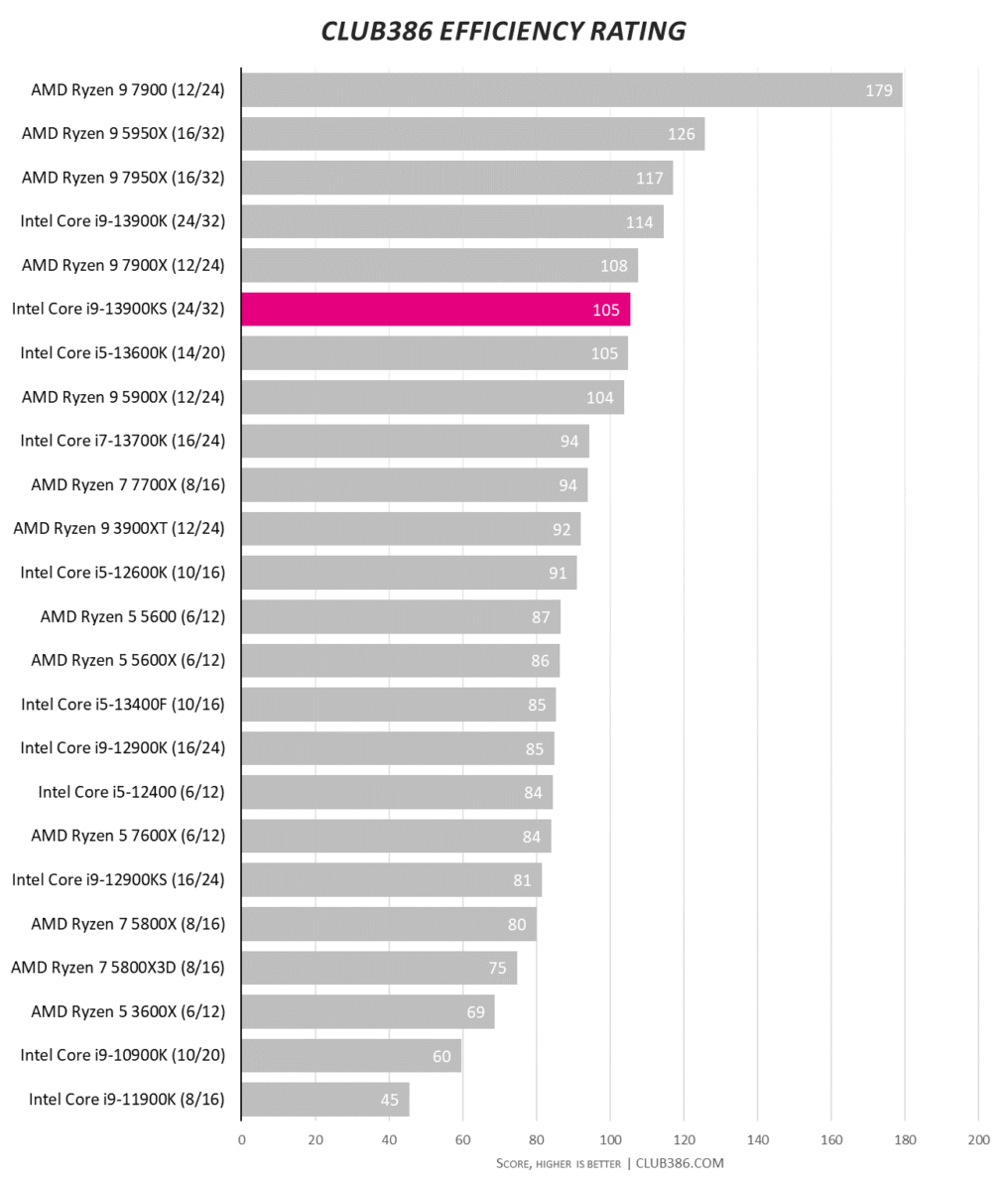
Dividing performance via total power consumption reveals KS falls behind regular K. That’s the literal price of opting for bleeding-edge performance, and the primary reason why we prefer the normal K for day-to-day usage.
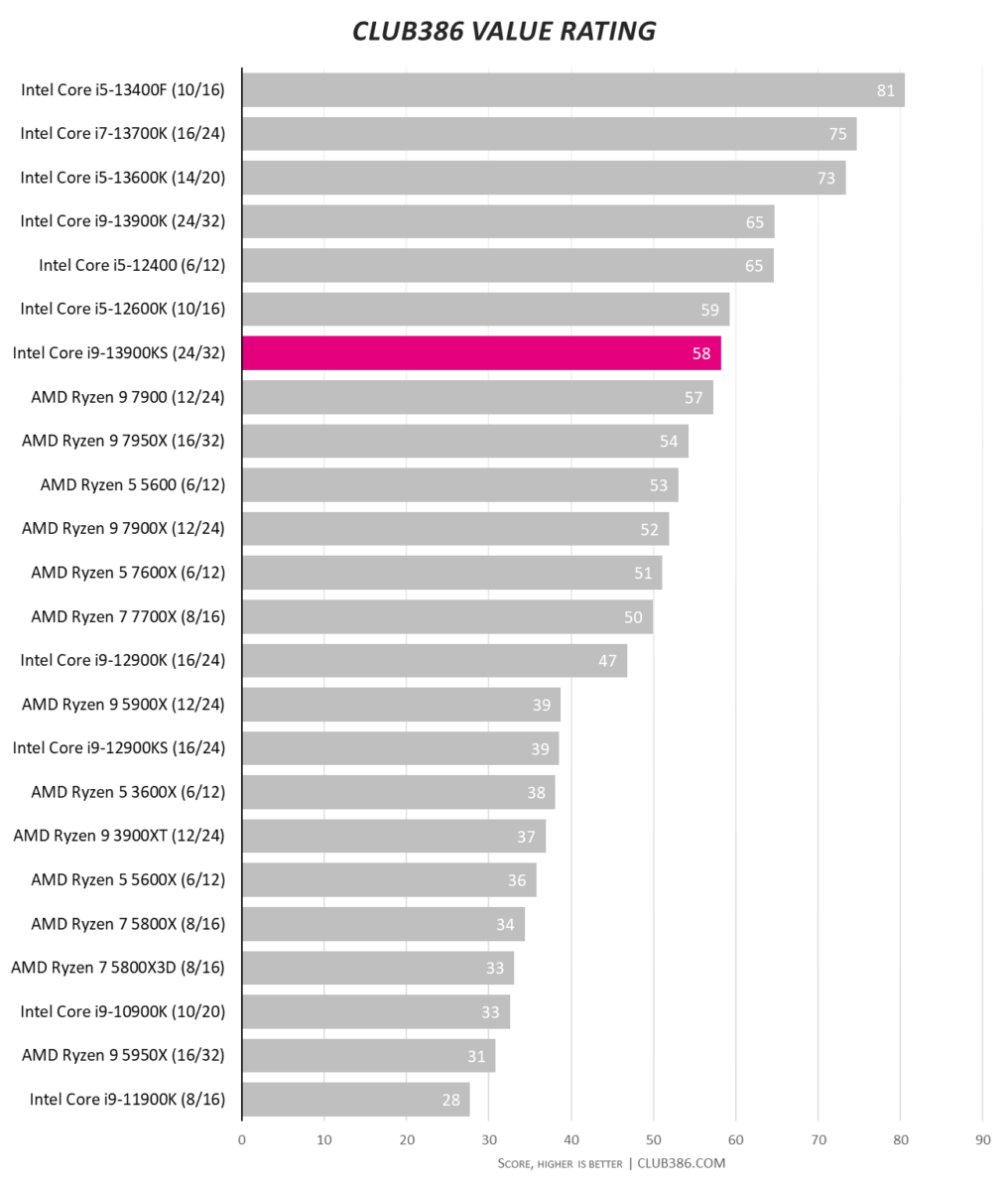
Evaluating the Cinebench multi-thread score against recommended retail price reveals another obvious truth: value is not the strong play here. You get more performance, sure, but at a higher fee than we’d like.
Further overclocking is a cautionary tale, too. As we’re close to the silicon limit, removing all power restrictions does little to benefit speed and performance farther. Manually toggling voltages and frequencies increases all-core speed from 5.5GHz to 5.6GHz, and benchmark results are similar to those exhibited at stock levels. What’s more, the extra heat produced means even our premier air cooler can’t hack the load for more than 45 seconds, where throttling takes place. Even a capable all-in-one such as the MSI MEG CoreLiquid S360 struggles to keep the overclocked chip south of 100°C. That’s what happens when there’s 430W coursing through the socket.
Conclusion
The Intel Core i9-13900KS is a tale of ambition trumping real-world benefit. A quest to achieve a peak 6GHz out-the-box clocking results in a powerhouse CPU which kerbs any notion of efficiency. In today’s world of spiralling energy costs, 13900KS feels anachronistic for all but die-hard enthusiasts equipped with superbly capable cooling.
Though it’s hard to criticise a chip which tops most charts, the $100 premium over regular Core i9-13900K isn’t worth it. We’d advise you to opt for that model, which is hardly a slouch, and overclock away if pure MHz means so much.
The speediest desktop chip this side of anywhere, Intel’s to be congratulated on being the first to a seminal figure. The largest stumbling block to recommendation, however, comes from its own stable. Sibling rivalry, eh?
Verdict: A fantastically fast yet power-hungry chip primed for the ultra-enthusiast.

